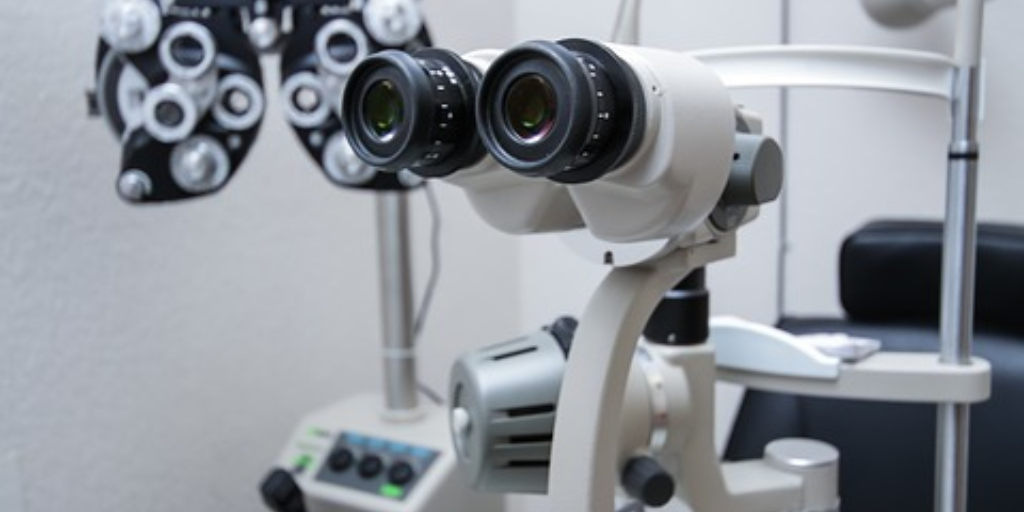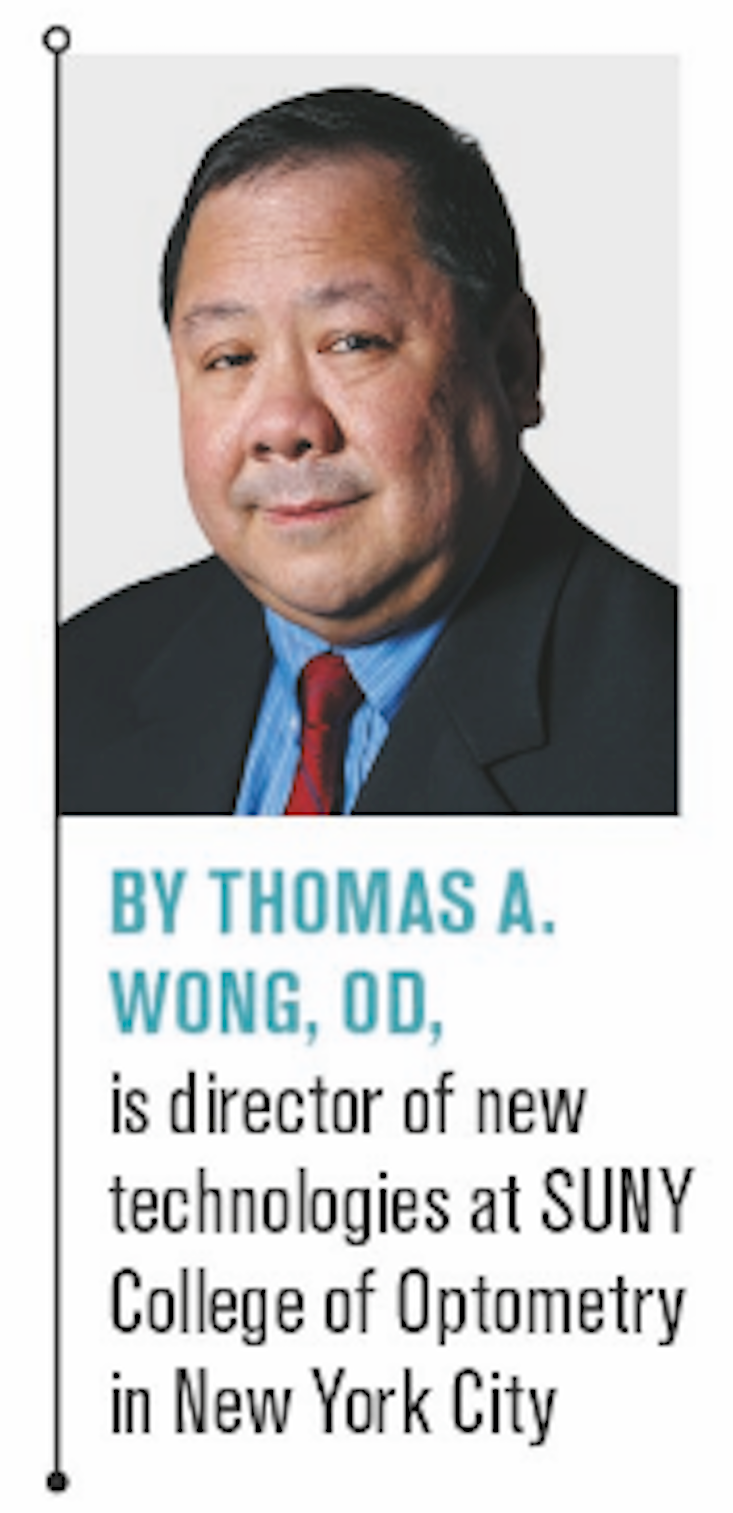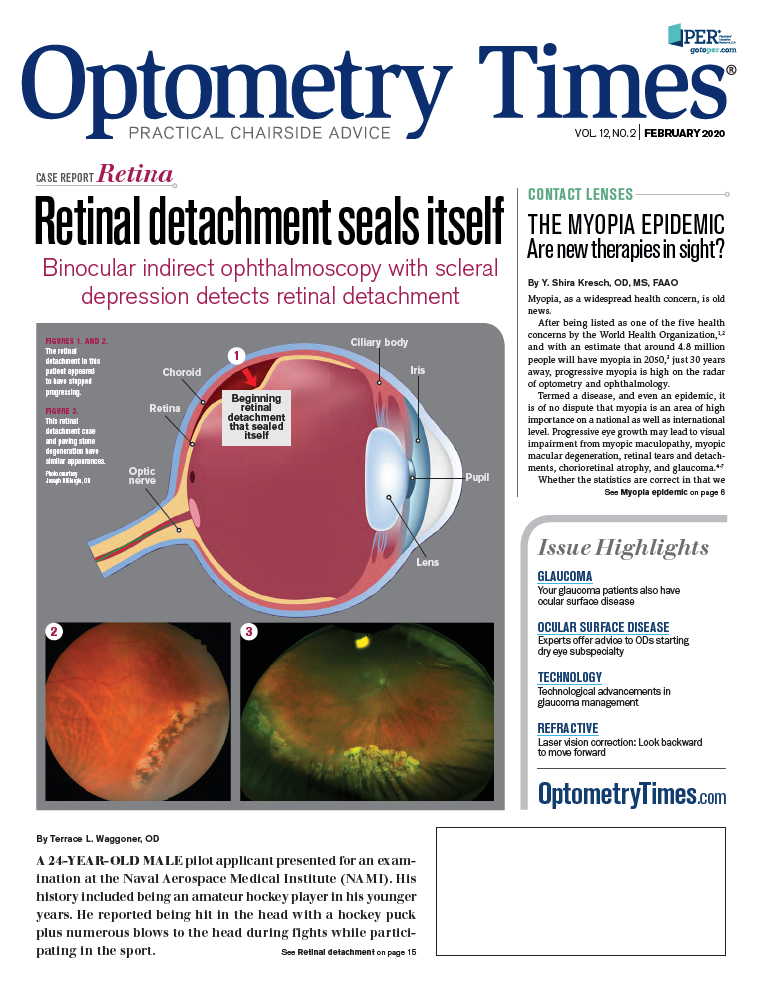Technological advancements in glaucoma management
Modern optometry can provide advanced outcome support to patients with glaucoma.


In today’s world of value-based care and the trending patient-driven care models, it is more important than ever that optometrists embrace their roles as clinicians in healthcare teams. Optometry’s success in the 21st century will depend on advanced clinical outcome support in areas including refractions, contact lens services, medical management of anterior segment disease, retinal disorders, neuro-ophthalmic conditions, glaucoma and other ocular conditions.
The modern practice of optometry is rapidly progressing in the 21st century, and its success will depend on advanced clinical outcome support.1
Core services in many primary-care optometry practices not only include refractions and contact lens services but also the medical management of anterior segment disease, retinal disorders, neuro-ophthalmic conditions, and other ocular diseases-especially glaucoma.
Today’s successful optometric practice relies on an optometrist’s understanding of important new technologies in the care of glaucoma patients.
Related: ODs: Redefine your role in glaucoma collaborative care
Changing glaucoma treatment
Over the last few decades, regulations establishing glaucoma management privileges for optometry have changed nationwide.
Schools and colleges of optometry have established state-of-the art curricula for their graduates to utilize evidence-based models in the diagnosis and management of glaucoma. Clinical externships and residency programs in ocular disease have provided additional training for optometric students and residents.
Advances in opt ical coherence tomography (OCT), visual fields, medical imaging, and progression analysis software have further revolutionized the optometric care of patients with glaucoma.
Related: Look at more than the optic nerve head in glaucoma patients
The Laser in Glaucoma and Ocular Hypertension (LIGHT)1 study provides objective evidence that ODs should re-think the traditional approach of initiating topical medications first and considering surgical procedures later when topicals are no longer as effective.
Also, new advancements in laser trabeculoplasty make the procedure quicker and safer with greater patient satisfaction.
Likewise, the development of minimally invasive glaucoma surgery (MIGS) procedures have changed conventional approaches of treatment.
Understanding surgical advancements in the care of the glaucoma patient is integral to clinical practice for the modern primary care optometrist.
Related: The myopia epidemic: Are new therapies in sight?
Perspectives from the LIGHT study
In April 2019, the groundbreaking (LIGHT) study was published in The Lancet.
A European-based, multi-center, observer-masked, randomized, controlled trial-it provided evidence that selective laser trabeculoplasty (SLT) should be considered as a firstline treatment for many open-angle glaucoma (OAG) patients.
The study included 718 participants who were ocular hypertensive or had OAG. All had similar baseline ocular characteristics (central corneal thickness, intraocular pressure [IOP] and visual field mean deviations).
Some 356 participants were treated with 360-degree SLT treatment, while 362 were treated medically with a prostaglandin, beta blocker, alpha-2 agonist, and carbonic anhydrase inhibitors in a stepwise regimen.
Related: How technology changed optometry’s role in cataract comanagement
Results showed that 93 percent of SLT-treated patients were at target IOP three years after the laser procedure, whereas 91 percent of patients who were treated topically were at target IOP in three years.
It is noteworthy to mention that none of those treated with SLT required a future trabeculectomy while 11 of the control members needed a trabeculectomy, seven of whom needed trabeculectomy revisions. In addition, the control group exhibited a higher need for cataract surgery. Participants were also surveyed about their quality of life using EQ-5D-5L questionnaires.
Overall, this study prompts the primary-care clinician to consider including SLT earlier in the typical OAG treatment regimen because it was effective in achieving IOP target goals. Study results also showed that SLT is a more cost-effective treatment and improves patient quality of life because SLT potentially reduces the need for invasive cataract surgery.2
Related: Why in-person care and technology must partner
Laser trabeculoplasty pipeline
While SLT has been the standard of procedural care for laser trabeculoplasty after its inception in the late 1990s-replacing argon laser trabeculoplasty (ALT)-a newer procedure, micropulse laser trabeculoplasty (MLT), holds promise as a possible replacement for SLT.
In ALT, a high-powered argon laser was used to burn trabecular meshwork (TM) tissue. The resulting contraction of scar tissue improved trabecular outflow but with the downside of a non-repeatable procedure that created thermal damage to the TM.
While ALT uses an argon green laser-the same laser used for retinopexy-SLT uses a Nd:YAG laser with a lower power density as a result of a larger (400 μm) spot size and very short (3 ns) pulse duration.
Related: Telemedicine in optometry: Is it inevitable?
This means the procedure is easier to perform because the surgeon simply needs to aim for the TM as opposed to find the small junction between non-pigmented and pigmented TM demanded by the small, 50-μm spot size of ALT.
More importantly, SLT has non-thermal effects selective for pigmented tissue; it does not burn the TM. This makes it a safer procedure than ALT-and a repeatable one-while its effectiveness was found to be equivalent to ALT.
Related: Use technology advancements to modernize your practice
In MLT the laser is pulsed in 300-μsec bursts, resulting in “cooling off” periods between pulses. As such, similar to SLT, no thermal damage to tissue results from the procedure.2
MLT has been demonstrated to be as efficacious at lowering IOP as SLT with a similar safety profile and improved patient comfort. The procedure came about in the mid 2000s, though has not yet gained the same traction that SLT enjoyed, likely because the gains in MLT compared to SLT are not as large as those in SLT compared to ALT.
Still, it is likely that MLT will become more mainstream. MLT is being introduced and utilized in retinal disease as well.3
Pre-operative management for laser trabeculoplasty involves instillation of apraclonidine to prophylactically treat IOP spikes and pilocarpine to open the angle. It often includes the use of prednisolone acetate (Pred Forte, Allergan Pharmaceuticals) 1% for five to seven days.
Related: Your glaucoma patients also have ocular surface disease
Understanding SALT
The use of topical anti-inflammatories post operatively has been debated in the past; however, the recent Steroids after Laser Trabeculoplasty (SALT) trial suggests the use of steroids or non-steroidal agents (NSAID) is beneficial in the effectiveness of the procedure.
The SALT trial was a multi-centered randomized control study comparing three study arms. The first group was given 1% prednisolone acetate, the second group was given 0.5% ketorolac (Acular, Allergan Pharmaceuticals) and the placebo group was given saline artificial tears. All groups were dosed four times per day for five days.
Patients were evaluated by a masked examiner for cells and flare on Day 1 and between five and seven days. IOP was measured by a masked technician, and IOP outcomes at six and 12 weeks showed a statistically significant lower eye pressure in those that were treated with either the steroid or NSAID compared to placebo.3
Related: A forecast of the global ocular allergy market
Trans-scleral SLT
Another interesting technological development being studied is applying the SLT laser directly onto the limbus versus the traditional method of applying the laser to the trabecular meshwork via a gonioscopic lens.3
From a technical standpoint, applying the gonio lens requires a topical anesthetic, dexterity, patient cooperation, and visualization of the trabecular meshwork.
Related: S. Wade Kimmell, OD on the importance of updated Glaucoma, OSD and dry eye treatments
This direct or trans-scleral SLT (DSLT) procedure would eliminate the need to use a gonio lens and can be performed quickly and safely, even in patients who have narrow angles, cloudy corneas, or other instances in which the trabecular meshwork is not easily visualized.
This method has yet to undergo FDA approval; however, the few double-blind, controlled, small studies that have been performed show it is effective in reducing IOP for at least one year.4
Related: Spectacle lenses do more: Embrace new technology
MIGS and modern glaucoma management
Recently, an array of relatively safe MIGS have been developed to decrease IOP. These procedures are typically performed in conjunction with cataract surgery.3
In a primary-care setting, it is beneficial to consider a MIGS procedure when glaucoma patients do not achieve target IOP goals, non-compliance becomes a challenge and/or visually significant cataracts develop.
Popular MIGS procedures target the trabecular outflow (Kahook Dual Blade trabeculectomy and Hydrus and iStents implants), suprachoroidal outflow (Cypass), subconjunctival filtration (Xen) or aqueous production (endoscopic cyclophotocoagulation [ECP]).3
It is imperative that pre-operative care includes a detailed gonioscopic exam prior to cataract surgery in order to select the most appropriate MIGS procedure.
For example, the Kahook Dual Blade trabeculectomy is effective only if the full extent of the trabecular meshwork is visible.4 Therefore, this would not be a practical option for chronic angle-closure glaucoma patients. ECP is a more viable option in such patients.
Intracapsular cataract extraction (ICCE) with MIGS post-operative care does not significantly differ compared to routine ICCE without a MIGS procedure.
Related: Year in review of optometric advancements
However, clinicians should be more vigilant for hyphemas, peripheral anterior synechiae, and hypotony as changes to the iridocorneal angle are made during the procedure.
Related: Innovative mobile technology targets low vision
Technology and outcomes
A thorough understanding of how technology impacts trends in the management of glaucoma and other ocular diseases should be supplemented by literature review and the study of evidence-based practices.
In today’s world of value-based care and the trending patient-driven care models, it is more important than ever that optometrists embrace their roles as clinicians in healthcare teams.
The modern practice of optometry is in an ideal position to provide advanced outcome support to patients with glaucoma.
More by Dr. Wong: How artificial intelligence is changing the future of optometry
References:
1. Nouri-Mahdavi K, Hoffman D, Coleman AL, Liu G, Li G, Gaasterland D, Caprioli J. Predictive factors for glaucomatous visual field progression in the Advanced Glaucoma Intervention Study. Ophthalmology. 2004 Sep 111(9): 1627–1635.
2. Gazzard G, Konstantakopoulou E, Garway-Heath D, Garg A, Vickerstaff V, Hunter R, Ambler G, Bunce C, Wormald R, Nathwani N, Barton K, Rubin G, Buszewicz M; LiGHT Trial Study Group. Selective laser trabeculoplasty versus eye drops for first-line treatment of ocular hypertension and glaucoma (LiGHT): a multicentre randomised controlled trial. British Journal of Ophthalmology. 2019 Apr 13;393(10180):1505-1516.
3. Gazzard G, Konstantakopoulou E, Garway-Heath D, Garg A, Vickerstaff V, Hunter R, Ambler G, Bunce C, Wormald R, Nathwani N, Barton K, Rubin G, Buszewicz M. LiGHT Trial Study Group. Selective laser trabeculoplasty versus eye drops for first-line treatment of ocular hypertension and glaucoma (LiGHT): a multicentre randomised controlled trial. The Lancet. 2019 Apr 13;393(10180):1505-1516.
4. Hong Y, Song SJ, Liu B, Hassanpour K, Zhang C, Loewen N. Efficacy and safety of micropulse laser trabeculoplasty for primary open angle glaucoma. International Journal of Ophthalmology. 2019 May 18;12(5):784-788.
5. Abramowitz B, Chadha N, Kouchouk A, Alhabshan R, Belyea DA, Lamba T. Selective laser trabeculoplasty vs micropulse laser trabeculoplasty in open-angle glaucoma. Clinical Ophthalmology. 2018 Aug 30;12:1599-1604.
6. Groth SL, Albeiruti E, Nunez M, Fajardo R, Sharpsten L, Loewen N, Schuman JS, Goldberg JL. SALT Trial: Steroids after Laser Trabeculoplasty: Impact of Short-Term Antiinflammatory Treatment on Selective Laser Trabeculoplasty Efficacy. Ophthalmology. 2019 Nov;126(11):1511-1516.
7. Geffen N, Ofir S, Belkin A, Segev F, Barkana Y, Kaplan Messas A, Assia EI, Belkin M. Transscleral Selective Laser
Trabeculoplasty Without a Gonioscopy Lens. J Glaucoma. 2017 Mar;26(3):201-207.
8. Geffen N, Ofir S, Belkin A, Segev F, Barkana Y, Kaplan Messas A, Assia EI, Belkin M. Transscleral Selective Laser Trabeculoplasty Without a Gonioscopy Lens. Journal of Glaucoma. 2017 Mar;26(3):201-207.
9. Lavia C, Dallorto L, Maule M, Ceccarelli M, Fea AM. Minimally invasive glaucoma surgeries (MIGS) for open angle glaucoma: A systematic review and meta-analysis. PLoS One. 2017 Aug 29;12(8):e0183142.
10. Sun W, Yu CY, Tong JP. A review of combined phacoemulsification and endoscopic cyclophotocoagulation: efficacy and safety. International Journal of Ophthalmology.
2018 Aug 18;11(8):1396-1402.
11. Dorairaj SK, Seibold LK, Radcliffe NM, Aref AA, Jimenez-Román J, Lazcano-Gomez GS, Darlington JK, Mansouri K, Berdahl JP. 12-Month Outcomes of Goniotomy Performed Using the Kahook Dual Blade Combined with Cataract Surgery in Eyes with Medically Treated Glaucoma. Advances in Therapy. 2018 Sep;35(9):1460-1469.

Newsletter
Want more insights like this? Subscribe to Optometry Times and get clinical pearls and practice tips delivered straight to your inbox.